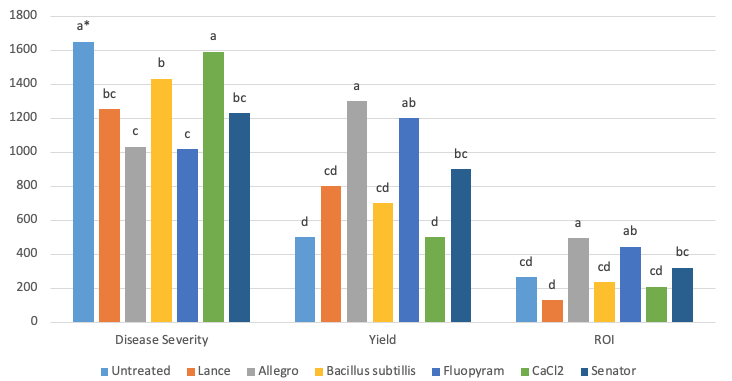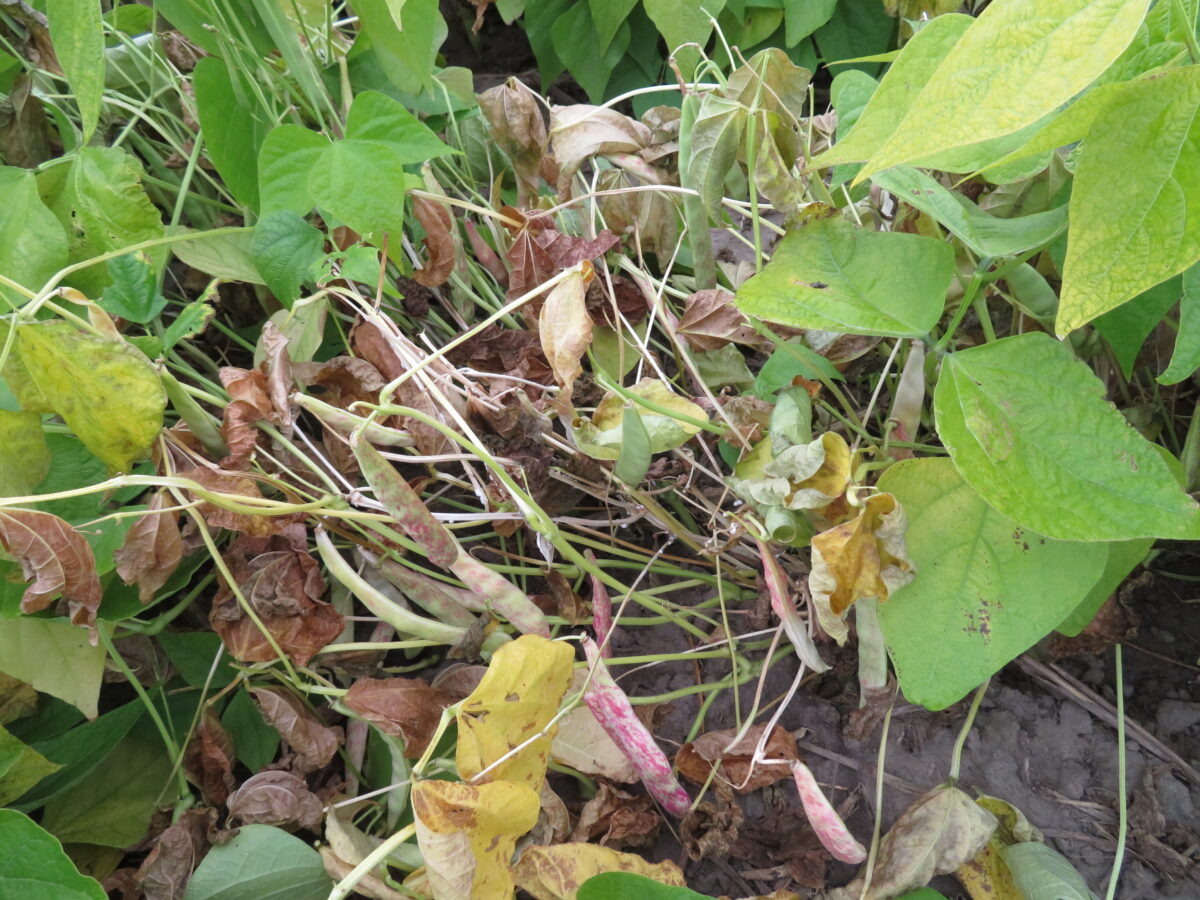Ontario growers routinely use fungicides to manage white mold is dry beans, but fungicides should be applied before any disease is visible. The purpose of this study was to measure the long-term performance and economic returns of fungicides, to help growers select a top product.
Four small plot experiments were conducted in 2012-2013 at the Huron Research Station, Exeter Ontario. Lush plant growth was promoted using high seeding rates and nitrogen fertilizer rates. Disease development was encouraged by seeding white mold sclerotia and using overhead irrigation. Seven fungicides were compared to an untreated control treatment. An index was developed to measure disease severity over time – as the index increased, disease increased. Seed yield (kg/ha) was adjusted to 18% moisture and return on investment ($/ha) accounted for the fungicide and application costs, with all other costs assumed to be the same.

Senator had low disease (Figure 1), and the highest yield and return on investment (ROI). Propulse was similar to Senator, while Allegro and Lance had slightly lower ROI due to relatively high product cost. Allegro had the greatest difference in profit margins compared to the untreated control, in high disease experiments (data not shown). Acapela and Priaxor had lower yield and ROI, compared to the top treatments. The alternative product Heads Up had poor performance, and was similar to the untreated control.
Originally published in Crop Protection 2016. Volume 82. Pages 75-81. Updated July 2020 for drybeanagronomy.ca.
